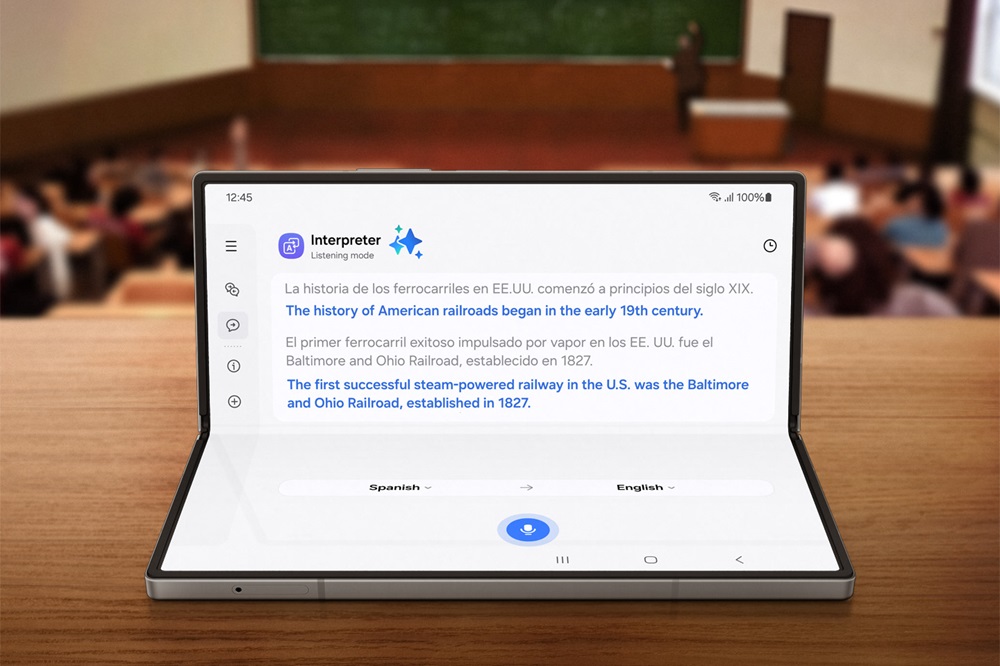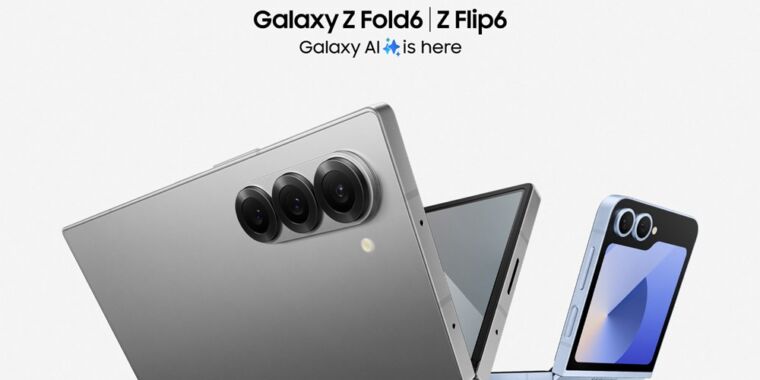Samsung
Samsung, like every other major tech company on the planet, held its Galaxy Unpacked event focused on its AI products. Galaxy AIThere was a flip phone, too, but the opening pitch at the event was “Galaxy AI Unlocks Life.” Samsung claimed that “cross-device intelligence” had ushered in “the next frontier of mobile AI.” But in its usual vein, the company said its AI would be personalized for users, serve humanity, and empower creators.
Livestream of Samsung’s Galaxy Unpacked 2024 event.
But of course, the latest foldables, wearables and the new Galaxy Ring are the ultimate way to experience Galaxy AI.

Samsung
Galaxy Ring and Galaxy Watch Ultra
Samsung has unveiled the seventh version of the Galaxy Watch, a sturdier and larger Galaxy Watch Ultra, and the first version of the Galaxy Ring, which aims to put Galaxy AI on your wrist or finger.
of Galaxy Ring ($400) is 7mm wide, 2.6mm thick, and weighs 2.3-3g. Tamaki OuraSamsung offers a sizing kit for its rings, which seems like a smart move given the difference in sizing compared to standard rings in this category and the possibility that you’ll be working out while wearing the ring.
The ring tracks heart rate, skin temperature, sleep, general activity, and AI-powered health features like Samsung’s invented “Energy Score” and “Health Tips.” As you’d expect, the Galaxy Ring is Android-only, and it gets even better when paired with a Galaxy smartphone. For example, you can use a “double pinch” gesture to launch certain features. This is something you can already do with the Apple Watch and iPhone, but old habits die hard.
of Galaxy Watch 7 and Watch Ultra They bear a striking resemblance to the Apple Watch Ultra and previous Galaxy Watch models that inspired them, respectively.
The Ultra model offers 10ATM water resistance, an IP68 rating, a titanium shell, and plenty of familiar “orange is outdoors” color. An orange “quick button” lets you access the flashlight, swim mode, and other features. Power saving mode gives you 100 hours of battery life, or up to 48 hours of continuous exercise tracking. There’s an emergency siren that blasts 85db from the watch, which will be fun if someone stumbles upon it.
The Galaxy Watch 7 is very similar to its predecessor: Both the Galaxy Watch 7 and Ultra run Wear OS 5 and One UI 6, the new 3nm Exynos W1000 chip, 2GB of memory, and 32GB of storage.
Both devices also come equipped with heart rate and body composition sensors, as well as new colored LEDs that can measure more things, including “advanced glycation end products,” which Samsung says can help the AI suggest dietary and lifestyle changes. do not have The biggest new feature on both watches is sleep apnea detection, which is a first for a modern wearable device and is also FDA-cleared, so it’s a feature that can at least be considered safe, if not a guaranteed indicator.

Samsung
Galaxy Z Fold and Z Flip 6
of Galaxy Z Fold 6 ($1,900) and Z Flip 6 The new Galaxy Fold ($1,100) is, as expected, an improvement over its predecessor. There’s a Snapdragon 8 Gen 3 chip inside. Both folding glasses are said to be stronger and are now IP48 rated, meaning dust resistance has been improved from “X” (lucky) to “4” (particles larger than 1 mm). It’s still disappointing at this price point, but it’s the reality of the foldable Edge.
The Z Fold 6’s exterior screen is slightly larger (6.2-6.3 inches), but the internal display is the same. The cameras are largely the same (50-megapixel main, 10-megapixel telephoto, and 12-megapixel ultra-wide), although the ultra-wide is said to have better low-light performance.
The Z Flip 6’s most notable upgrades are a 4,000mAh battery and an internal vapor-cooling chamber. The base model also gets 12GB of RAM instead of 8GB, and 512GB of storage instead of 256GB.
Galaxy AI is here even if you don’t invite it
Some of the products Samsung announced today aren’t listed here. Galaxy Buds 3 and Bad 3 Proare wireless earbuds that remind me of other hugely popular wireless earbuds, and what Samsung really had to sell today is how its proprietary Galaxy AI is the connective tissue between them all.
The screens on the Fold and Flip models are great for encircling and searching for objects; the cameras can auto-zoom, they can summarize notes, and translation, especially, is everywhere. The watch and ring will track your health and suggest all sorts of ways to improve it, but there’ll be a lot of disclosure about where that data goes. Rick Osterloh, Google’s head of devices and services, was on hand to give Samsung’s effort a sort of Gemini blessing.
Of the major tech companies, Samsung appears to be the least open about the origins, operation and details of its AI platform. Galaxy AI dedicated page The difference between on-device and cloud-based AI processing is outlined in just three vague sentences, one of which states, “Most other features that require a network connection leverage the cloud in some way.”
The most useful and immediate aspect of the AI offensive is this entry in the Galaxy AI FAQ: “Can I disable the AI features?” Samsung says you can choose to disable the AI or enable it on the device only, and that there’s a “master switch” for cloud-based AI processing in settings. After paying hundreds or thousands of dollars, it’s reasonable for a company to work out a policy and strategy a little before offering it.


